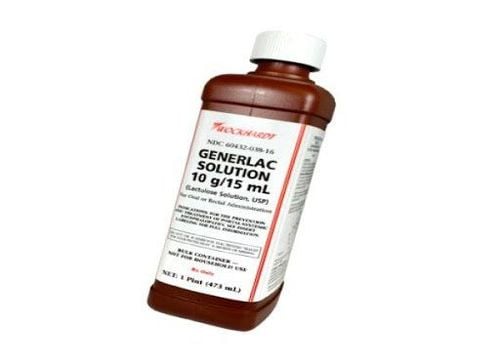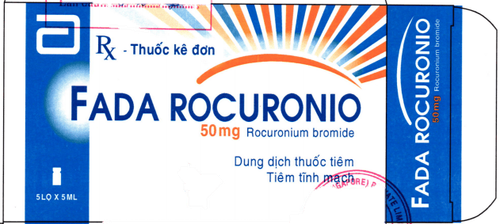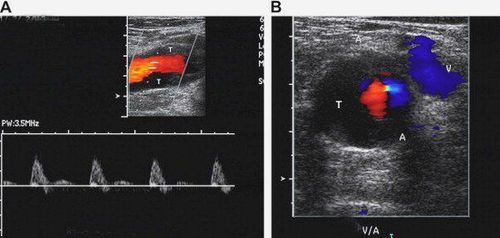This is an automatically translated article.
Normal portal pressure is 5 to 10 mmHg (7 to 14 cm H2O) and 4 to 5 mmHg higher than inferior vena cava pressure (portal differential). Higher values are defined as portal hypertension. The following article will focus on analyzing and clarifying the signs, symptoms and treatment measures of venous hypertension or portal hypertension in children.
1. What is portal hypertension in children? The portal vein is formed by the superior mesenteric vein and the splenic vein, which drains blood from the gastrointestinal tract in the abdomen, spleen, and pancreas to the liver. In blood channels lined by endothelial cells (sinuses), blood from the portal vein terminals mixes with that of the hepatic artery. Blood will drain from the sinuses through the hepatic vein into the inferior vena cava.
Portal hypertension is an increase in pressure inside the portal vein, the vein that carries blood from the intestines and spleen to the liver. Portal hypertension occurs when there is a blockage or malformation of the vein itself, or in people with cirrhosis or another form of liver-related disease that blocks the flow of blood through the veins. liver. Portal hypertension is uncommon in children.
Increased pressure in the portal vein causes pressure in other veins to increase as well. The increased pressure can force blood to back up into the splenic vein, causing the spleen to swell. Excessive pressure in the veins of the intestines can cause diarrhea.
When the body senses increased portal pressure, it tries to compensate by growing new veins through the liver. These veins, called veins, tend to be full of twists and turns. They are much weaker than normal veins and can bleed easily. Variants tend to develop around the esophagus, spleen, stomach, and colon.
Because variations create a bypass around the liver, toxins and nutrients that the liver normally processes can pass into the rest of the blood.
2. Causes and symptoms of portal hypertension in children 2.1. Causes of portal hypertension in children Table: Causes of portal hypertension related to the liver



Besides, there are 3 main causes leading to increased venous pressure in children:
Portal hypertension is due to pre-hepatic causes
Obstruction and varicose veins of the sinus wall (most common): usually due to infection of the umbilicus in the neonatal period, placement of an umbilical vein catheter for neonatal resuscitation, or after an episode of severe gastrointestinal infection causing superior mesenteric vein occlusion as in inflammation bowel necrosis... Other causes are congenital malformations of the portal vein (portal atrophy, valves in the portal vein), arterio-splenic fistula and diseases that cause blood to clot. Portal hypertension is caused by liver causes
Secondary cirrhosis: After viral hepatitis, biliary atrophy and other disorders such as: α1-antitrypsin deficiency, cystic fibrosis, Wilson's disease, Galactose's disease blood, Gaucher disease, Byer's disease... Congenital cirrhosis: there are two forms, the familial form is often accompanied by malformations of the renal tubules; The sporadic form is not usually associated with renal injury. Schistosomiasis Hepatic artery fistula with intrahepatic portal vein Elevated portal venous pressure due to post-hepatic causes
Budd-Chiari syndrome: suppurative thrombophlebitis Inferohepatic vena cava occlusion pour into constrictive pericarditis

Bụng sưng lên là do tích tụ chất lỏng là triệu chứng của tăng áp lực tĩnh mạch ở trẻ em
2.2. Symptoms of venous hypertension in children The symptoms of venous hypertension in children are not much different from those in adults. Portal hypertension itself does not have many typical symptoms, but a child may develop symptoms related to complications of the disease such as:
Stomach bleeding or vomiting blood, causing due to ruptured and bleeding variants Swollen abdomen is caused by fluid accumulation Vague discomfort in the upper left part of the abdomen, due to an enlarged spleen Because portal hypertension itself is often a complication of As liver disease progresses, children with it may also experience symptoms of poor liver function:
Poor weight gain or weight loss Jaundice Confusion or forgetfulness due to the presence of substances, such as toxins The blood is normally filtered by the liver
3. Diagnosis and treatment of venous hypertension in children 3.1. Diagnosis Clinical diagnosis
Spleen enlargement Gastrointestinal bleeding Ascites, collateral circulation: common in hepatic and post-hepatic causes Hepatosplenomegaly: common in post-liver causes Small, firm liver likely to be seen in cirrhosis after viral hepatitis. Elevated pre-hepatic portal venous pressure and liver properties are almost unchanged Subclinical diagnosis
Contrast esophagogram: shows non-enhanced lines in the lower third of the esophagus, with Stomach and esophagus can be seen to be pushed forward (due to edema of the retroperitoneal space due to the development of the accessory circulatory system) Flexible esophagoscopy splenic-portal angiogram Inferior vena cava pressure measurement and the suprahepatic vein by cardiac catheterization Color sonography: assess the size of the portal vein and the flow into the liver Contrast computed tomography of the abdomen Liver biopsy and liver function tests 3.2 . Treatment The general rule of thumb when treating venous hypertension in children is that salicylate-containing medicines should not be used each time the child has an infection because it increases the risk of gastrointestinal bleeding.
Medical treatment
Compensation for blood loss: start with isotonic infusion, dextran or plasma, RBCs to maintain Hct 30% Somatostatin Propranolol Endoscopic sclerotherapy or ligation of varicose veins
Surgery
Indications: repeated bleeding or bleeding for the first time but the conservative treatment methods failed. Methods used for children: Central splenic-renal vein connection; Connect the superior mesenteric vein to the inferior vena cava (with an artificial vessel or using the internal jugular vein as a bridge). In addition, there are other less commonly used methods such as: lateral portal-aortic anastomosis, portal-aortic anastomosis using artificial vessels, peripheral splenic-renal anastomosis, left hepatic vein anastomosis with mesenteric vein above by internal jugular vein bypass... In developed countries, raised venous pressure in children is a condition of great concern. Children's hospitals, children's health centers... often take multidisciplinary approaches to prevent the worsening of portal hypertension in children and at the same time address the risks. cause of gastrointestinal (GI) bleeding.
If the condition is caused by problems with the portal vein itself, doctors may perform an anastomosis to relieve pressure and prevent or treat gastrointestinal bleeding. If portal hypertension is due to cirrhosis, the child will be listed for a liver transplant and search.
Volunteer groups have also been established to specialize in helping infants, children, adolescents and young adults with a variety of liver, gallbladder and bile duct disorders. At each step, the team's experts strive to provide compassionate care, respect each family's values, and address their problems and concerns with current and future health. of their child. Doctors refer children with liver disease to liver transplant programs from around the world.

Phẫu thuật điều trị tăng áp lực tĩnh mạch ở trẻ em
Many of the drugs and procedures used to treat portal hypertension have their origins in the adult care field. Children's Liver Disease Center has been at the forefront of adapting these adult procedures to children, including developing techniques and tools appropriate for children's smaller bodies.
Doctors were also early adopters of wireless endoscopic technology for deformity monitoring. Wireless esophagoscopy uses a capsule that contains two cameras. The child swallows the battery-powered capsule; The camera takes many pictures per second as the capsule moves through the esophagus. This gives doctors a very clear view of any changes in the esophagus or gastrointestinal tract, does not require any sedation or anesthesia, and is much more comfortable than a catheterized endoscopy. often.
Portal hypertension is a pathological condition caused by many factors, in which cirrhosis accounts for the highest rate, followed by schistosomiasis and vascular abnormalities in the liver. The disease is uncommon in children, however, special attention should be paid to those with the disease, including acute bleeding from varicose veins (with a high mortality rate), ascites, splenomegaly. large, brain-related diseases.... To help prevent acute bleeding from varicose veins, parents need to pay attention to take their children to regular monitoring and regular series of endoscopy.
Please dial HOTLINE for more information or register for an appointment HERE. Download MyVinmec app to make appointments faster and to manage your bookings easily.













